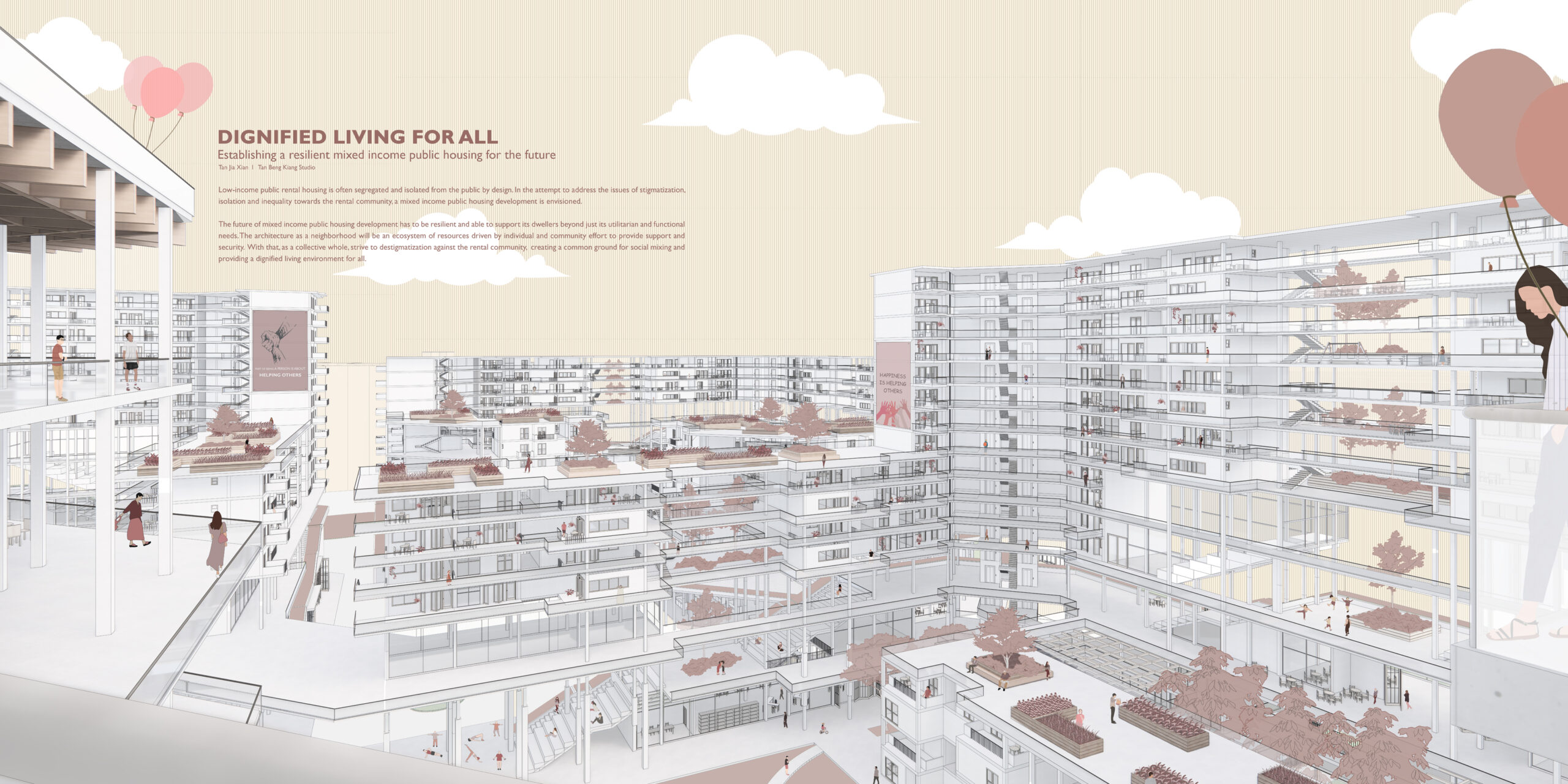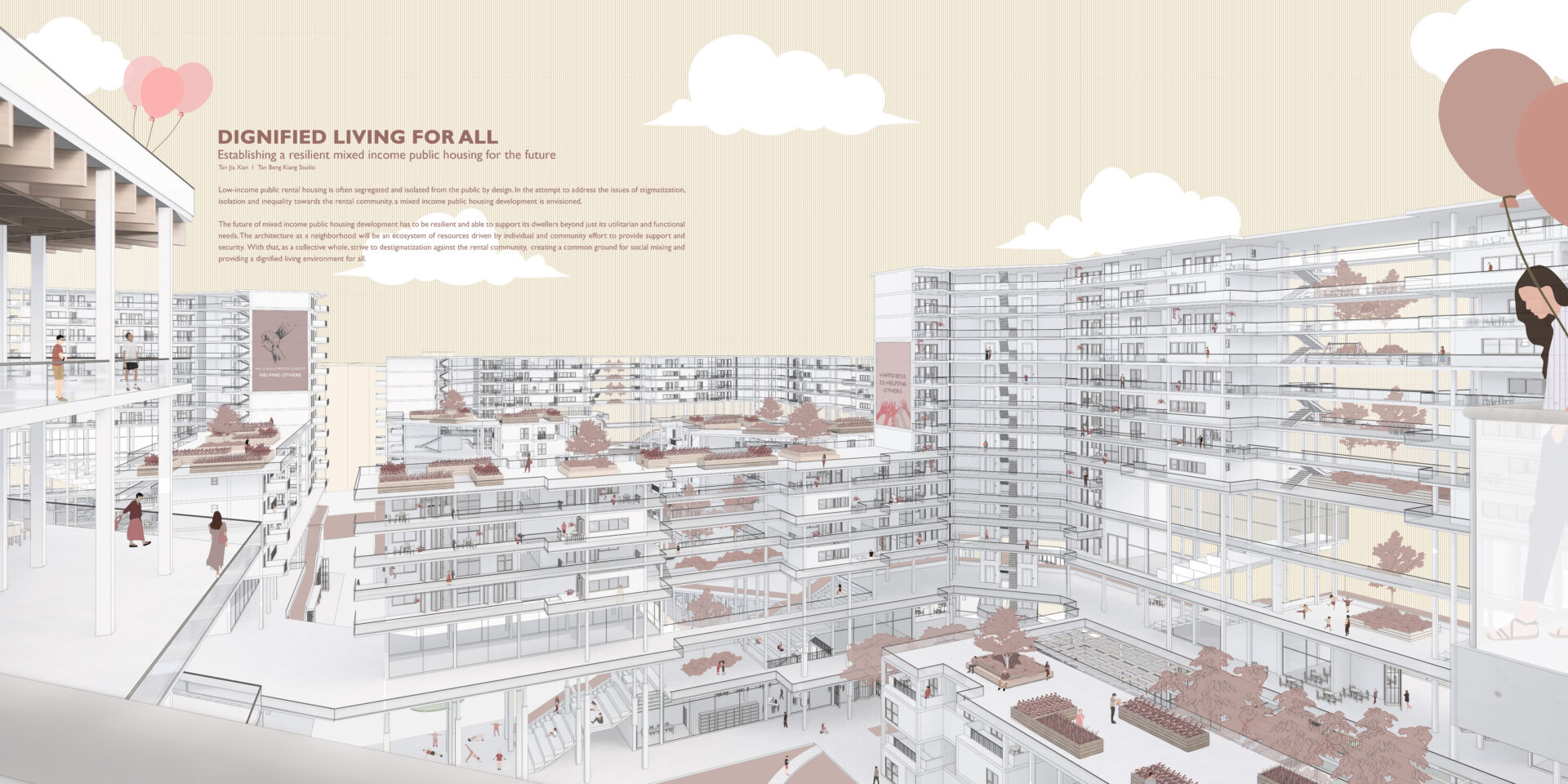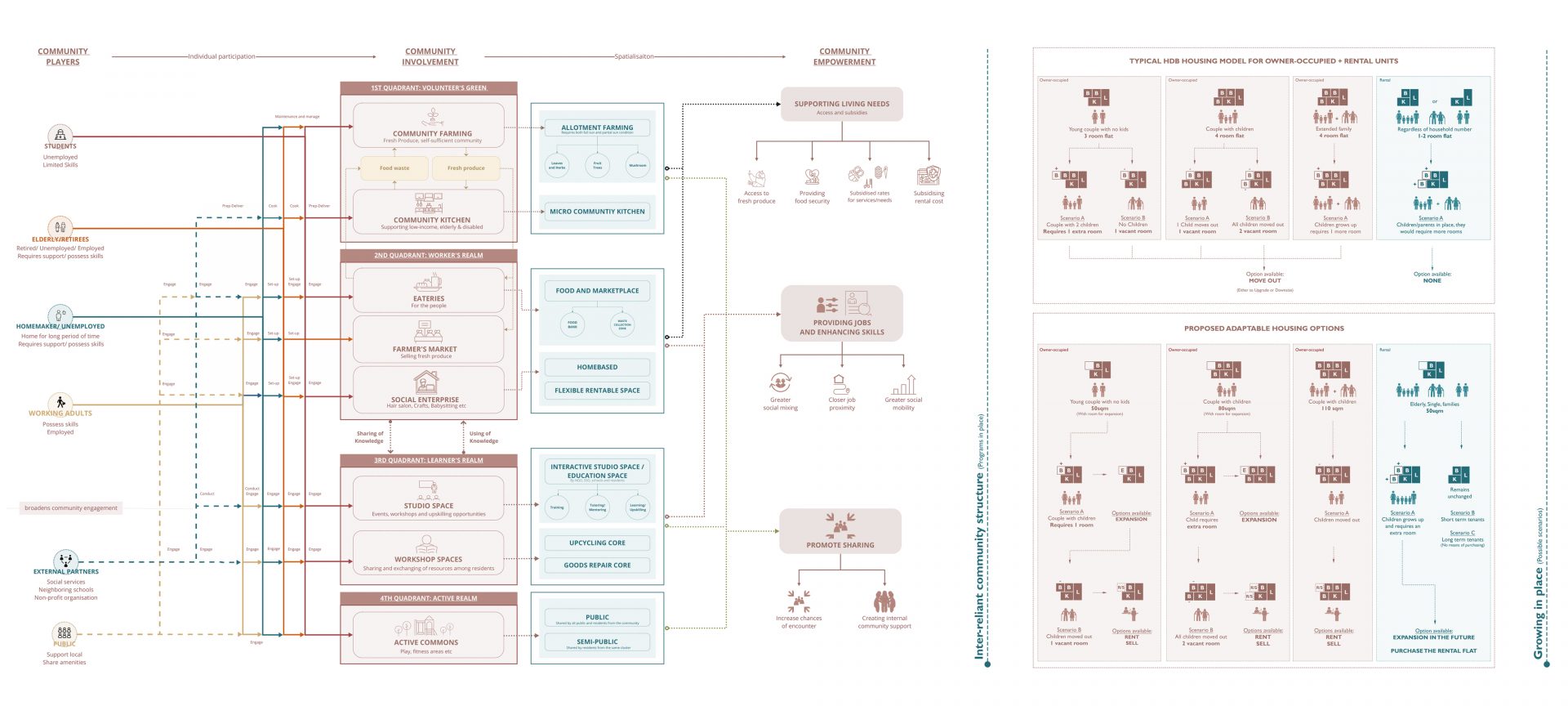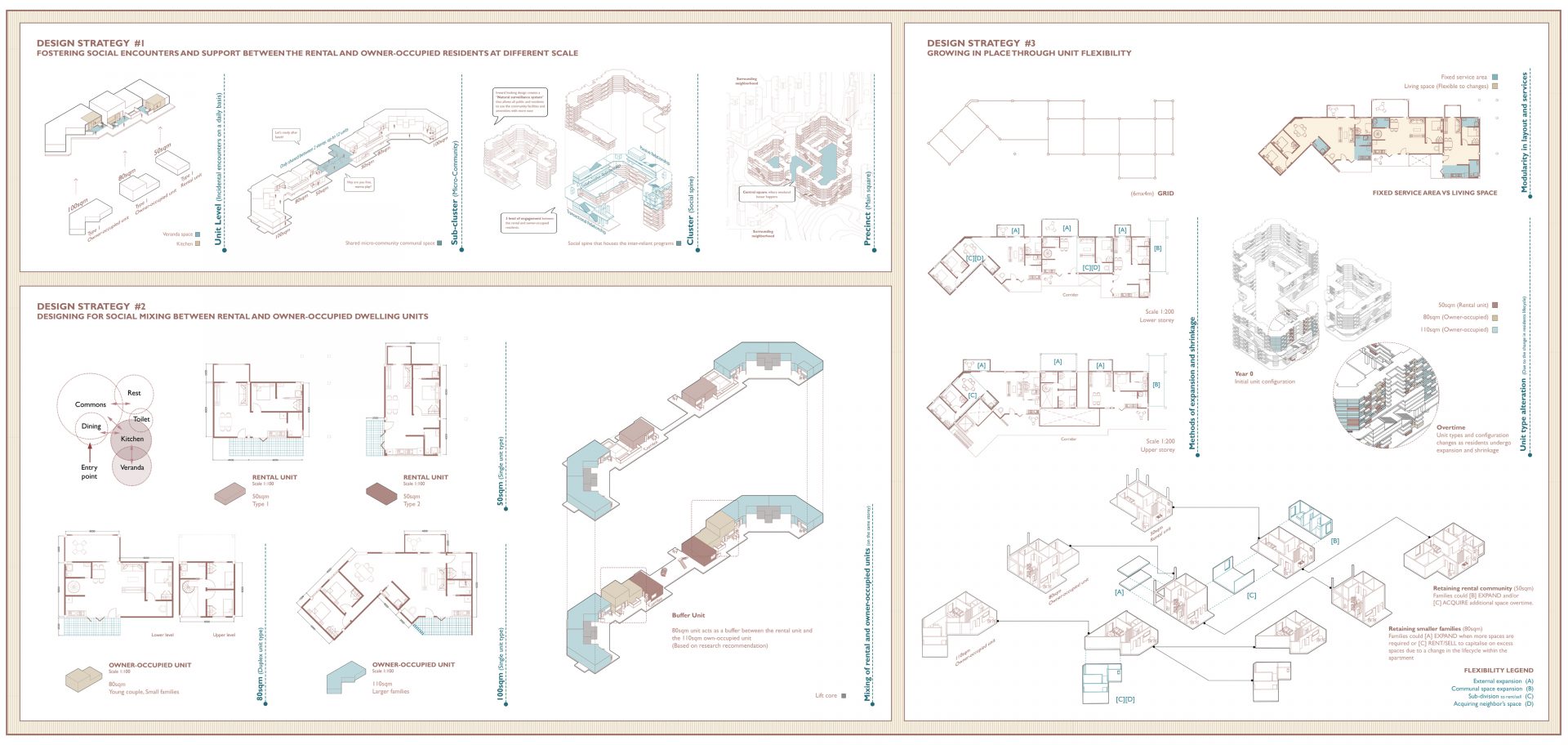Thesis Overview
This thesis aims to redesign the rental housing situation in Singapore with the approach of a mixed income housing development model. The alternative solution will be proposed through the lenses of purposeful social mixing and building of social capital among the rental and owner-occupied residents to address the issue of inequality and stigmatisation. Over the past 4 decades, little seems to have changed despite the constant fight for improvement by various members of the parliament regarding Singapore’s rental housing condition. The refusal to enhance the housing design has deprived many of dignity and a dignified living environment. Poverty to some is not by choice but by their living circumstances and one should not be further dehumanised by the poor living condition.
This project is hence a fervent attempt to prevent the low-income community from suffering alone, trying to make ends meet in their own account. Therefore, through the approach of an (1) inter-reliant community structure, (2) enhancing familiarity among two communities and allowing for (3) growing in place for both communities, the design hopes to generate a resilient community.
Design Strategy
Design strategy #1:
Fostering social encounters and support between the rental and owner-occupied residents at different scale. There is a need to recalibrate the social sizes in order to effectively promote social mixing and interaction among 2 communities.
Design strategy #2:
Designing for social mixing between rental and owner-occupied dwelling units on the same floor. This is an attempt to increase incidental encounters between the rental and owner-occupied resident to form a sense of familiarity between 2 groups on a daily basis.
Design strategy #3:
Growing in place through unit flexibility.
The apartment has been planned to allow maximum flexibility and future customisation. The units are based on a 6x4m grid with precast beams used together with precast floor slabs. The grid does not restrict spatial options within the unit but instead permits adjustment to allow for expansion and shrinkage overtime.
Conclusion
In order to address the issues of stigmatisation, isolation, and inequality towards the rental community, the architecture needs to carefully craft spaces where both communities can co-exist. Understanding the differences and needs, spaces are designed to create more chances of incidental meeting on a daily basis and programs are put in place to support those in need.
To mitigate the differences between the rental and owner-occupied community, various hierarchy of interaction allows for different level of comfortability. More importantly, deploying and retaining the support from within the community itself could potentially help to soften the distance and create a more resilient community.
In the long run, the community centric design seeks to de-stigmatize against the rental community, create a common ground for social mixing and to provide a dignified living environment for all.







Supervisor's comments:
Jia Xian’s interest in the topic started from her volunteer work giving out meals to those in rental housing. Her personal observations and experience of the rental housing environment led to a series of questions. It is an important topic to address with the widening gap between the rich and the poor. The contribution of her thesis is not only physical design with shared facilities to foster micro-communities but is premised on an inter-reliant system meeting social and economic needs, where residents of mixed income help each other and age in place. It points to a possible future of a resilient and inclusive public housing neighbourhood.
- Assoc. Prof. Tan Beng Kiang (Dr.)